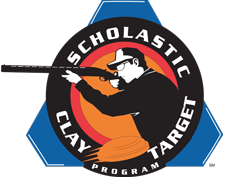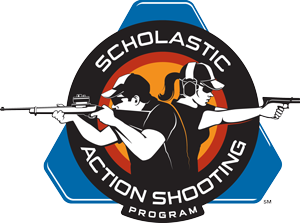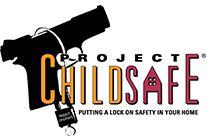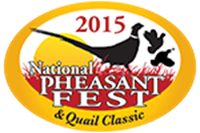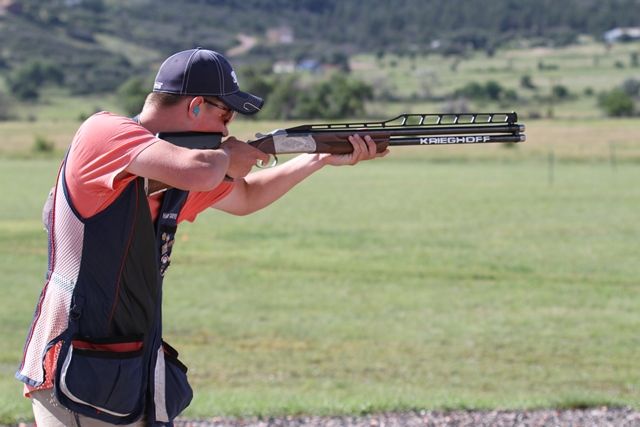Author: SSSF Staff
The MidwayUSA Foundation has wrapped up another successful grant cycle, and 475 youth shooting teams -- many of whom are SCTP and SPP teams -- will be receiving funds to use for team expenses. The total payout was over $1.4 million, the largest grant cycle to date for the Foundation.
Dick Leeper, MidwayUSA Foundation Executive Director said, “These grant funds will help over 15,000 athletes continue their passion for shooting sports. Many teams rely on these funds to help pay for ammunition, targets, entry fees, travel to shoots, and more. It is our hope to see more teams apply and receive grants in the future.”
Grants are provided through the Team Endowment Account Program, offered by the MidwayUSA Foundation. Teams with a balance in their Team Endowment Account are eligible to apply for a grant once per year by completing the MidwayUSA Foundation grant application. Grant deadlines are June 15 and December 15, and teams can receive up to 5% of their account balance.
The MidwayUSA Foundation is a public charity, founded by Larry and Brenda Potterfield, working to sustain the shooting sports industry by providing permanent funding to youth shooting teams. They can grow their Team Endowment Account through soliciting private donations, which are currently matched 1:1, earnings, and conducting fundraisers. For more information about the MidwayUSA Foundation, Inc. and its Team Endowment Account Program, please visit www.midwayusafoundation.org or call 1-877-375-4570.
SSSF, Project ChildSafe® Partner on Firearm Safety Education
The Scholastic Shooting Sports Foundation (SSSF) is joining forces with Project ChildSafe to help promote responsible firearm handling and storage. 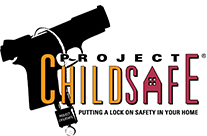 “Our shared history with the Scholastic Shooting Sports Foundation makes this partnership a natural fit, and SSSF’s many student athletes are outstanding ambassadors of safe firearms handling and storage for young people and adults,” said Steve Sanetti, president and CEO of the National Shooting Sports Foundation (NSSF), which launched Project ChildSafe in 1999. SSSF is focused on sharing the tradition of shooting sports with future generations. It encourages safe and responsible firearm handling through its team-based shooting training, which allows student athletes to learn, practice, and compete in programs like the Scholastic Clay Target Program and Scholastic Pistol Program. “With more than 12,000 student athletes participating on over 800 teams across the country, we cannot overstate the importance of safety education as a component of the shooting sports tradition,” said Ben Berka, SSSF’s President and Executive Director. “By working with Project ChildSafe to pass this education through our athletes to their families and their communities, we can foster safe enjoyment of the shooting sports and take steps that can directly help prevent firearm accidents.” NSSF, the trade association of the firearms industry, launched Project ChildSafe in 1999 as a nationwide initiative to promote firearms responsibility and encourage proper storage of firearms when they are not in use. Its mission is to help prevent firearm accidents through the distribution of safety education information and free firearm safety kits, which include a cable-style gun lock. Through vital partnerships with law enforcement agencies across the country, Project ChildSafe has distributed more than 36 million firearms safety kits and gun locks to gun owners in all 50 states and five U.S. Territories.
“Our shared history with the Scholastic Shooting Sports Foundation makes this partnership a natural fit, and SSSF’s many student athletes are outstanding ambassadors of safe firearms handling and storage for young people and adults,” said Steve Sanetti, president and CEO of the National Shooting Sports Foundation (NSSF), which launched Project ChildSafe in 1999. SSSF is focused on sharing the tradition of shooting sports with future generations. It encourages safe and responsible firearm handling through its team-based shooting training, which allows student athletes to learn, practice, and compete in programs like the Scholastic Clay Target Program and Scholastic Pistol Program. “With more than 12,000 student athletes participating on over 800 teams across the country, we cannot overstate the importance of safety education as a component of the shooting sports tradition,” said Ben Berka, SSSF’s President and Executive Director. “By working with Project ChildSafe to pass this education through our athletes to their families and their communities, we can foster safe enjoyment of the shooting sports and take steps that can directly help prevent firearm accidents.” NSSF, the trade association of the firearms industry, launched Project ChildSafe in 1999 as a nationwide initiative to promote firearms responsibility and encourage proper storage of firearms when they are not in use. Its mission is to help prevent firearm accidents through the distribution of safety education information and free firearm safety kits, which include a cable-style gun lock. Through vital partnerships with law enforcement agencies across the country, Project ChildSafe has distributed more than 36 million firearms safety kits and gun locks to gun owners in all 50 states and five U.S. Territories.
SSSF joins a growing list of leaders in the hunting, conservation and shooting sports industries that have endorsed and supported Project ChildSafe’ s mission and its message of “Own It? Respect it. Secure it.” More About Project ChildSafe Project ChildSafe is a 501(c)(3) tax-exempt charity supported through contributions from diverse public sources to Project ChildSafe, Inc. To learn more about Project ChildSafe, visit www.projectchildsafe.org. About NSSF The National Shooting Sports Foundation is the trade association for the firearms industry. Its mission is to promote, protect and preserve hunting and the shooting sports. Formed in 1961, NSSF has a membership of more than 10,000 manufacturers, distributors, firearms retailers, shooting ranges, sportsmen’s organizations and publishers. For more information, visit www.nssf.org. About SSSF The Scholastic Shooting Sports Foundation (SSSF) is a 501(c)(3) organization supported by contributions from the industry and the public to promote youth development through the shooting sports. SSSF exists to raise funding and other resources for youth development programs in the shooting sports industry. It is responsible for all aspects of the Scholastic Clay Target Program and Scholastic Pistol Program across the United States. To learn more, visit www.sssfonline.org.
 “Our shared history with the Scholastic Shooting Sports Foundation makes this partnership a natural fit, and SSSF’s many student athletes are outstanding ambassadors of safe firearms handling and storage for young people and adults,” said Steve Sanetti, president and CEO of the National Shooting Sports Foundation (NSSF), which launched Project ChildSafe in 1999. SSSF is focused on sharing the tradition of shooting sports with future generations. It encourages safe and responsible firearm handling through its team-based shooting training, which allows student athletes to learn, practice, and compete in programs like the Scholastic Clay Target Program and Scholastic Pistol Program. “With more than 12,000 student athletes participating on over 800 teams across the country, we cannot overstate the importance of safety education as a component of the shooting sports tradition,” said Ben Berka, SSSF’s President and Executive Director. “By working with Project ChildSafe to pass this education through our athletes to their families and their communities, we can foster safe enjoyment of the shooting sports and take steps that can directly help prevent firearm accidents.” NSSF, the trade association of the firearms industry, launched Project ChildSafe in 1999 as a nationwide initiative to promote firearms responsibility and encourage proper storage of firearms when they are not in use. Its mission is to help prevent firearm accidents through the distribution of safety education information and free firearm safety kits, which include a cable-style gun lock. Through vital partnerships with law enforcement agencies across the country, Project ChildSafe has distributed more than 36 million firearms safety kits and gun locks to gun owners in all 50 states and five U.S. Territories.
“Our shared history with the Scholastic Shooting Sports Foundation makes this partnership a natural fit, and SSSF’s many student athletes are outstanding ambassadors of safe firearms handling and storage for young people and adults,” said Steve Sanetti, president and CEO of the National Shooting Sports Foundation (NSSF), which launched Project ChildSafe in 1999. SSSF is focused on sharing the tradition of shooting sports with future generations. It encourages safe and responsible firearm handling through its team-based shooting training, which allows student athletes to learn, practice, and compete in programs like the Scholastic Clay Target Program and Scholastic Pistol Program. “With more than 12,000 student athletes participating on over 800 teams across the country, we cannot overstate the importance of safety education as a component of the shooting sports tradition,” said Ben Berka, SSSF’s President and Executive Director. “By working with Project ChildSafe to pass this education through our athletes to their families and their communities, we can foster safe enjoyment of the shooting sports and take steps that can directly help prevent firearm accidents.” NSSF, the trade association of the firearms industry, launched Project ChildSafe in 1999 as a nationwide initiative to promote firearms responsibility and encourage proper storage of firearms when they are not in use. Its mission is to help prevent firearm accidents through the distribution of safety education information and free firearm safety kits, which include a cable-style gun lock. Through vital partnerships with law enforcement agencies across the country, Project ChildSafe has distributed more than 36 million firearms safety kits and gun locks to gun owners in all 50 states and five U.S. Territories.Get a Safety Kit
Click to find a law enforcement agency with gun safety kits availableSSSF joins a growing list of leaders in the hunting, conservation and shooting sports industries that have endorsed and supported Project ChildSafe’ s mission and its message of “Own It? Respect it. Secure it.” More About Project ChildSafe Project ChildSafe is a 501(c)(3) tax-exempt charity supported through contributions from diverse public sources to Project ChildSafe, Inc. To learn more about Project ChildSafe, visit www.projectchildsafe.org. About NSSF The National Shooting Sports Foundation is the trade association for the firearms industry. Its mission is to promote, protect and preserve hunting and the shooting sports. Formed in 1961, NSSF has a membership of more than 10,000 manufacturers, distributors, firearms retailers, shooting ranges, sportsmen’s organizations and publishers. For more information, visit www.nssf.org. About SSSF The Scholastic Shooting Sports Foundation (SSSF) is a 501(c)(3) organization supported by contributions from the industry and the public to promote youth development through the shooting sports. SSSF exists to raise funding and other resources for youth development programs in the shooting sports industry. It is responsible for all aspects of the Scholastic Clay Target Program and Scholastic Pistol Program across the United States. To learn more, visit www.sssfonline.org.
Apply for Scholarship from Positive Coaching Alliance
Positive Coaching Alliance (PCA) invites high school athletes to apply for scholarships that are awarded to those who meet the high standards of a Triple-Impact Competitor. PCA awards scholarships of $1,000-$2,000 (depending on location) to high school athletes, based on their essays explaining how they meet the standard defined in Elevating Your Game: Becoming a Triple-Impact Competitor by PCA Founder Jim Thompson:
- Personal Mastery: Making oneself better
Leadership: Making one's teammates better
Honoring the Game: Making the game better
Reloading for Trap, Skeet, and Sporting Clays: The Right Load
Contributed by Ron Reiber of Hodgdon Powder Co. This article originally appeared in the December 2014 issue of Inside SSSF. See the full issue of Inside SSSF. Ask five shooters what is the right load for clay target shooting, and you will get five different answers. We are not talking about the components that go into the individual load, rather, how much shot, size of shot, and velocity of shot necessary to “always” break the clay target. The truth is, more velocity and more shot are not the answers to the best loads. High velocity means many, many deformed shot at the bottom of the shot column as the shot starts down the barrel. The higher the velocity, the more deformed pellets. Those deformed pellets do not “buck” the air well, and become flyers that skew off in various directions, or slow down rapidly, lengthening the shot string. That means less shot on the clay target. From years working in the ballistics laboratory and viewing shot strings on camera, I have come to see ideal patterns form in the velocity range of 1150 fps to 1200 fps. No matter if it is 1 1/8 oz., 1 oz., or 7/8 oz., patterns are best in this range. How much shot is enough? It depends on the target, but it is a proven fact that no more than 24 grams or 7/8 oz. shot is necessary to cleanly break the most difficult trap targets thrown in competition, that being International Trap Competition. That game started with 1 1/8 oz. of shot and went to 1 oz. because scores were too high. Scores went up, so they decided to again drop the amount of shot to lessen scores. They went to 24 grams (approximately 7/8 oz.), and scores rose again! What does that teach us? The lesser amount of shot is still more than adequate, but recoil has been significantly reduced, and we are better able to keep our heads on the stock, and thus produce better scores. Now apply that concept to using the 1150 to 1200 fps velocity range to load our clay target loads, and we have produced the perfect reload with a shot string of optimum dimension. I tell shooters this is a 99% “head” game, and we need to believe in our gun, load, and ability to place the shot in the right spot! My motto regarding the load is, “It’s not how much you throw, but what you throw and how you throw it.” If I were to start over shooting each of the clay target games mentioned above, I would not be loading 1 1/8 oz. loads, rather for comfort and keeping my head down for correct follow-through, I would load either 1 oz. or 7/8 oz., depending on what my gun patterned the best with the components I had available. The diameters of these patterns are the same as with 1 1/8 oz. but have shorter shot strings due to less shot set-back and less deformation, thereby having just as many pellets contacting the target as the heavier load. Why take the recoil when it is not necessary, and why not save the money on expensive lead shot, when less will do the same? Load 100 rounds of 1 1/8 oz., 100 of 1 oz., and 100 of 7/8 oz. at the same velocity level, pattern them, and then shoot a couple rounds of trap, skeet, or sporting clays. Then see if your scores are not equal to or better than those shot with the heavier loads. Watch how they compare in how the targets break. I believe your scores will be better because you were more easily able to “stay in the gun,” especially for doubles. Less recoil and fatigue does not become a factor toward the end of the 100 rounds. Arguably the greatest sporting clays shooter of all times, George Digweed, shot at 10 crossing targets at 100 yards with standard 1 oz., #7 ½’s, and broke 7 of the 10. He performed this phenomenal feat at the American Shooting Centers in Houston, TX, and it was witnessed by many. Case closed.
Register for Pheasant Fest Conservation Career Fair & Shooting Sports Clinic
Pheasants Forever invites coaches and youth to its upcoming Conservation Career Fair and Shooting Sports Clinic on February 21, 9 a.m. to noon, during the 2015 National Pheasant Fest & Quail Classic, February 20-22. The event will be held at the Iowa Events Center in Des Moines, Iowa. 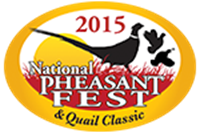 Topics for the clinic will focus on helping your team become more successful on the shooting range, in academics, and through community service. Pre-registration is required. Please use the registration form to register if you plan to attend. Note that limited space is still available, although the deadline on the registration form has passed.
"We look forward to providing you the best training we can through dynamic and experienced presenters and panels," said John Linquist, National Coordinator of Pheasants Forever. "We've planned some outstanding educational sessions." Both Ben Berka, SSSF Executive Director and President, and Tom Wondrash, SCTP Director, will be among the presenters. Admission is free for the fair and clinic, and everyone who registers will receive a complimentary day pass to the trade show floor at Pheasant Fest. Every youth in attendance will also a free Pheasants Forever Youth membership. Get more details and register.
Topics for the clinic will focus on helping your team become more successful on the shooting range, in academics, and through community service. Pre-registration is required. Please use the registration form to register if you plan to attend. Note that limited space is still available, although the deadline on the registration form has passed.
"We look forward to providing you the best training we can through dynamic and experienced presenters and panels," said John Linquist, National Coordinator of Pheasants Forever. "We've planned some outstanding educational sessions." Both Ben Berka, SSSF Executive Director and President, and Tom Wondrash, SCTP Director, will be among the presenters. Admission is free for the fair and clinic, and everyone who registers will receive a complimentary day pass to the trade show floor at Pheasant Fest. Every youth in attendance will also a free Pheasants Forever Youth membership. Get more details and register.
 Topics for the clinic will focus on helping your team become more successful on the shooting range, in academics, and through community service. Pre-registration is required. Please use the registration form to register if you plan to attend. Note that limited space is still available, although the deadline on the registration form has passed.
"We look forward to providing you the best training we can through dynamic and experienced presenters and panels," said John Linquist, National Coordinator of Pheasants Forever. "We've planned some outstanding educational sessions." Both Ben Berka, SSSF Executive Director and President, and Tom Wondrash, SCTP Director, will be among the presenters. Admission is free for the fair and clinic, and everyone who registers will receive a complimentary day pass to the trade show floor at Pheasant Fest. Every youth in attendance will also a free Pheasants Forever Youth membership. Get more details and register.
Topics for the clinic will focus on helping your team become more successful on the shooting range, in academics, and through community service. Pre-registration is required. Please use the registration form to register if you plan to attend. Note that limited space is still available, although the deadline on the registration form has passed.
"We look forward to providing you the best training we can through dynamic and experienced presenters and panels," said John Linquist, National Coordinator of Pheasants Forever. "We've planned some outstanding educational sessions." Both Ben Berka, SSSF Executive Director and President, and Tom Wondrash, SCTP Director, will be among the presenters. Admission is free for the fair and clinic, and everyone who registers will receive a complimentary day pass to the trade show floor at Pheasant Fest. Every youth in attendance will also a free Pheasants Forever Youth membership. Get more details and register.Fundraising for Your Team: Soliciting Donations
This is part of a series of posts on fundraising for SCTP and SPP teams.  Just seeing the words "soliciting donations" may make you cringe. For some people, it isn't an easy thing to do. But asking for donations doesn’t have to mean standing on the corner with a cardboard sign. Just like soliciting sponsorships, there is a professional and effective way to ask for donations. Many people who support the shooting sports designate a portion of their charitable donations for shooting-related organizations, and they would be receptive to helping your team if they knew how or even knew you needed their support. The very people who make an annual donation to the NRA, join conservation organizations, or make donations to other youth athletics programs are potential donors to your shooting team. Here are some pointers to make the process less painful:
Just seeing the words "soliciting donations" may make you cringe. For some people, it isn't an easy thing to do. But asking for donations doesn’t have to mean standing on the corner with a cardboard sign. Just like soliciting sponsorships, there is a professional and effective way to ask for donations. Many people who support the shooting sports designate a portion of their charitable donations for shooting-related organizations, and they would be receptive to helping your team if they knew how or even knew you needed their support. The very people who make an annual donation to the NRA, join conservation organizations, or make donations to other youth athletics programs are potential donors to your shooting team. Here are some pointers to make the process less painful:
 Just seeing the words "soliciting donations" may make you cringe. For some people, it isn't an easy thing to do. But asking for donations doesn’t have to mean standing on the corner with a cardboard sign. Just like soliciting sponsorships, there is a professional and effective way to ask for donations. Many people who support the shooting sports designate a portion of their charitable donations for shooting-related organizations, and they would be receptive to helping your team if they knew how or even knew you needed their support. The very people who make an annual donation to the NRA, join conservation organizations, or make donations to other youth athletics programs are potential donors to your shooting team. Here are some pointers to make the process less painful:
Just seeing the words "soliciting donations" may make you cringe. For some people, it isn't an easy thing to do. But asking for donations doesn’t have to mean standing on the corner with a cardboard sign. Just like soliciting sponsorships, there is a professional and effective way to ask for donations. Many people who support the shooting sports designate a portion of their charitable donations for shooting-related organizations, and they would be receptive to helping your team if they knew how or even knew you needed their support. The very people who make an annual donation to the NRA, join conservation organizations, or make donations to other youth athletics programs are potential donors to your shooting team. Here are some pointers to make the process less painful:- Create a simple printed presentation with all the info potential donors need to know about your team, SCTP-SPP, and your fundraising campaign's goals. This can be as simple as a one-page information sheet you've printed yourself or a little more elaborate, but don't overdo it. Much of the information in it will be the same that you create for sponsorship proposals.
- Determine how the funds will be used. Will the money become part of the annual operating fund, be used as a donation to your team's MidwayUSA Foundation endowment fund where it will be matched 1:1, or designated for a particular use, such as travel to the National Championship or new uniforms? Include this in your presentation.
- Treat this as a campaign with a beginning and an end. This will keep you from being in a perpetual state of asking for money, and having a deadline will create some urgency to get the job done. However, make it easy for people to donate any time of the year.
- You may wish to establish different levels of donations, as with sponsorships, but it might be a good idea to evaluate your prospects the first year to determine how to set these. Consider your own circumstances in making this decision. If you think most of your donations will come in very small amounts, it probably isn't necessary.
- Publicize your fundraising campaign and your team's activities. Contact the local newspaper, distribute a press release, and use social media. Is there a local chapter of Pheasants Forever, NWTF, NRA, or other shooting/hunting/conservation organization? Its members will almost certainly be interested in your team. Offer to do a presentation at a meeting. Ditto local civic organizations; keep the solicitation very low-key and make it mostly about awareness of your team.
- Before launching your campaign, create a list of prospects. Since businesses would usually fit into the sponsor category, for these purposes, we're referring to individuals. Include people from your community whom you know to be shooters or hunters, supporters of youth programs, family friends who are interested in your activities, and others from your community. Assign those prospects to someone specific to contact. That way, good prospects won't be overlooked, nor will several members of the team contact the same person.
- Add a donation button to your team's website and social media pages so people can donate year-round, if they wish. You won't have to process credit cards or have a sophisticated payment system on your website if you use Paypal. Anytime you produce printed materials, direct people to your website. Don't have a website? Google "build a free website" to find many options.
- Consider using an online fundraising platform, especially if you are raising money for a specific purpose, such as travel to your state shoot or the National Championship. Google "online fundraising websites" for ideas.
- Make use of SCTP and SPP videos in your presentations. We have short videos that can help you tell the SCTP - SPP story. See our video channel.
- Be prepared to follow up. In addition to perfect record-keeping, plan to send follow-up acknowledgements for donations.
- Recognize your donors. Take every opportunity to thank your donors and recognize their generosity. Add a page on your website to recognize your donors by name. If you receive a major donation, you may even want to announce it publicly through a press release, with the donor's permission.
- If you are a 501(c)(3) nonprofit, get advice from your attorney or financial advisor on any fundraising requirements that might apply, such as different accounts for different purposes and record-keeping. Don't risk your nonprofit status by overlooking these requirements. If yours is a school team, make sure to consult with school authorities to stay in compliance.
- Finally, keep in mind that these are suggestions to spark your imagination. Not everything will be right for your team, nor is this a comprehensive list of everything you should consider. But having a plan and following it does apply to every team. Consider your team's circumstances and opportunities, and get to work.
Fundraising for Your Team: Sponsorships
This is part of a series of posts on fundraising for SCTP and SPP teams.  A sponsor can be your team’s best friend, providing anything from necessary funds to uniforms to shooting equipment to raffle items. You also gain the caché and confidence that comes with being associated with that sponsor. But there's more to having an effective sponsorship program than most people realize. If there's one fact that should guide you in sponsor solicitation, it is this: Potential sponsors are solicited by athletic teams, yearbook staffs, cheerleader squads, charities, and every organization in town that depends upon the support of the community. How you set yourselves apart from the rest of the crowd will determine your success. Here are some tips to consider:
A sponsor can be your team’s best friend, providing anything from necessary funds to uniforms to shooting equipment to raffle items. You also gain the caché and confidence that comes with being associated with that sponsor. But there's more to having an effective sponsorship program than most people realize. If there's one fact that should guide you in sponsor solicitation, it is this: Potential sponsors are solicited by athletic teams, yearbook staffs, cheerleader squads, charities, and every organization in town that depends upon the support of the community. How you set yourselves apart from the rest of the crowd will determine your success. Here are some tips to consider:
 A sponsor can be your team’s best friend, providing anything from necessary funds to uniforms to shooting equipment to raffle items. You also gain the caché and confidence that comes with being associated with that sponsor. But there's more to having an effective sponsorship program than most people realize. If there's one fact that should guide you in sponsor solicitation, it is this: Potential sponsors are solicited by athletic teams, yearbook staffs, cheerleader squads, charities, and every organization in town that depends upon the support of the community. How you set yourselves apart from the rest of the crowd will determine your success. Here are some tips to consider:
A sponsor can be your team’s best friend, providing anything from necessary funds to uniforms to shooting equipment to raffle items. You also gain the caché and confidence that comes with being associated with that sponsor. But there's more to having an effective sponsorship program than most people realize. If there's one fact that should guide you in sponsor solicitation, it is this: Potential sponsors are solicited by athletic teams, yearbook staffs, cheerleader squads, charities, and every organization in town that depends upon the support of the community. How you set yourselves apart from the rest of the crowd will determine your success. Here are some tips to consider:- While businesses that sell shooting supplies are a perfect fit, don’t limit yourself to those. A local business whose owner supports the shooting sports and/or youth activities might be an ideal candidate. The person who owns an auto parts store or hair salon might be an avid shooter or 2nd Amendment supporter who would be proud to be associated with a youth shooting team.
- Before calling on a potential sponsor, plan your presentation and strategy. Develop a simple but thorough written proposal that includes information about your team, SCTP or SPP, what you're asking for, and what's in it for them, then discuss those points with the prospect. After you leave, they should have everything they need to consider your proposal and/or explain it to others in the company. Need help telling the SCTP/SPP story? Use our videos.
- Parents and coaches: while it is great for you to be involved and even take the lead in sponsor proposals, remember to keep the student athletes involved. If you're making a presentation, take along at least one member of the team to participate.
- Know your audience and be selective. Never walk down Main Street with your proposal in hand and make cold calls at every door. Select those businesses you think might be a good fit and address your proposal to them. Call in advance to learn who the decision-maker is or what the proper channels are for making a sponsorship proposal. While you may be inclined to insist on speaking with the president or owner, the business' protocol may require you to start with a marketing person. You won't win any points by bypassing protocol. NEVER make a "to whom it may concern" or "Dear Sir" proposal.
- Be creative in what you ask for. You're more likely to get a sponsor when your proposal includes something other than or in addition to writing a check. Consider what your needs are and how that sponsor might help. Could they provide necessary products like ammunition or shirts and hats for tournaments? Could they offer a discount to team members on shooting products? Help with a fundraising raffle by selling tickets or posting flyers at their business? What you ask for will probably vary depending on the type of business, its size, its interest and involvement in the shooting sports, and the interest of management in shooting.
- Consider different levels of sponsorship with different levels of benefits and cost. Not every business has the same resources available, and a small sponsorship is a good way to develop a relationship that could grow into something larger.
- Be prepared for rejection. You may hear "no" more often than "yes," but you should leave with the same degree of grace regardless of the answer. If what seems to be an ideal sponsor rejects your proposal, don't take it personally. Even if they want to sponsor your team, they may need to say "no" because of financial constraints, prior commitments, lack of authority, or other reasons. Thank them for their time and consideration.
- A simple "thanks." You would be surprised how far saying "thank you" will go and how many organizations take their sponsors for granted, never bothering to use those two words. Use them often -- both publicly and privately!
- Keep them informed. Tell them about the tournaments your team will be participating in, how your team is doing, and how you are using their contribution.
- Include the sponsor's name, logo, and/or ad on your website, in social media pages, on your uniforms or t-shirt, in any printed programs or materials, and anywhere else there is an opportunity.
- Recognize them whenever possible at any annual banquet, shoot, or other team event.
- Provide free tickets, based on the level of support, to any banquet or event your team hosts.
- Get them involved. If it's a local company -- and most will be -- invite them to a shooting event or practice. Don't you think they would enjoy shooting the SPP stages or shooting a round of trap with you at practice? The more emotionally invested they are with your team, the more financially invested they are likely to be.
SCTP Shooter Hank Garvey Chosen as Brownells/NRA Youth Shooting Sport Ambassador
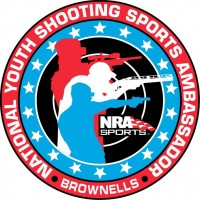 SCTP shooter and USA Shooting National Junior Team member Hank Garvey of Newburyport, Massachusetts has been chosen as one of six representatives for the 2015 Brownells/National Rifle Association (NRA) Youth Shooting Sport Ambassador Program. The program gives NRA’s Co-op Youth group partners -- including Boy Scouts of America, National High School Rodeo Association, Royal Rangers, Venturing (BSA), and USA Shooting -- the opportunity to select the outstanding youth from their organization to represent them. Garvey’s interest as an avid sportsman and as a rising prospect for the USA Shooting Team helped the 16-year-old Garvey stand out among the many junior athletes that applied, according to USA Shooting’s Youth Programs and Coach Academy Director, Mike Theimer. “Our interests are well-represented by the influence this young man can have as a NRA Youth Ambassador,” Theimer said. “He’s well-rounded and as focused an individual as you can find at that age. He has a bright future in our sport, and I’ll be interested to see how he uses his experiences in shooting to help engage others to get involved and participate.”
SCTP shooter and USA Shooting National Junior Team member Hank Garvey of Newburyport, Massachusetts has been chosen as one of six representatives for the 2015 Brownells/National Rifle Association (NRA) Youth Shooting Sport Ambassador Program. The program gives NRA’s Co-op Youth group partners -- including Boy Scouts of America, National High School Rodeo Association, Royal Rangers, Venturing (BSA), and USA Shooting -- the opportunity to select the outstanding youth from their organization to represent them. Garvey’s interest as an avid sportsman and as a rising prospect for the USA Shooting Team helped the 16-year-old Garvey stand out among the many junior athletes that applied, according to USA Shooting’s Youth Programs and Coach Academy Director, Mike Theimer. “Our interests are well-represented by the influence this young man can have as a NRA Youth Ambassador,” Theimer said. “He’s well-rounded and as focused an individual as you can find at that age. He has a bright future in our sport, and I’ll be interested to see how he uses his experiences in shooting to help engage others to get involved and participate.”  A sophomore at St. Johns Prep, Garvey’s stock rose significantly throughout the 2014 shooting season, and he is now considered one of the elite double trap shotgun competitors within USA Shooting. He’s hoping to make continued headway in a discipline filled with talent, including current World Champion Josh Richmond, Olympic gold medalist Glenn Eller, and Olympian Jeff Holguin. Competing in his first shotgun match when he was eight, Garvey has been on the fast-track ever since. His success in part has been formed through the Scholastic Clay Target Program (SCTP), culminating with his first national title last summer, which led to his appointment to USA Shooting’s National Junior Team. A strong junior competitor, Garvey distinguished himself in 2014 with several “open” accomplishments including a top-eight finish at the Championship of the Americas in Guadalajara, Mexico, a top-five finish at Nationals, and a top-four finish at the recent Fall Selection Match. His performance in Guadalajara also helped earn him the Minimum Qualifying Score (MQS) athletes need to be eligible to compete at the Olympic Games. A self-described true sportsman, Garvey enjoys all sorts of hunting including ducks, big game, turkey, bird, and small game. Living near the ocean, he’s developed a fondness for fishing and enjoys boating, catching eels, clams, and lobsters. He also spends his off-time carving decoys, tying flies, and trick shooting, while also volunteering for the local Ducks Unlimited Chapter and banding ducks at the local National Wildlife Refuge. “I feel honored to be selected as a youth role model for my sport and the shooting community,” Garvey said. “I understand this position comes with both tremendous responsibility and opportunity. I look forward to sharing the sport with others while helping to create a greater understanding and awareness for all of the shooting sports. I will uphold the high standard for which our sport should be measured.” Next week during the National Shooting Sports Foundation’s annual SHOT Show, Garvey will attend along with the other ambassadors and will be introduced to industry leaders, interact with sponsors, and engage with the key industry stakeholders. He’ll also attend the National Rifle Association’s Annual Meetings in April in a similar capacity.
A sophomore at St. Johns Prep, Garvey’s stock rose significantly throughout the 2014 shooting season, and he is now considered one of the elite double trap shotgun competitors within USA Shooting. He’s hoping to make continued headway in a discipline filled with talent, including current World Champion Josh Richmond, Olympic gold medalist Glenn Eller, and Olympian Jeff Holguin. Competing in his first shotgun match when he was eight, Garvey has been on the fast-track ever since. His success in part has been formed through the Scholastic Clay Target Program (SCTP), culminating with his first national title last summer, which led to his appointment to USA Shooting’s National Junior Team. A strong junior competitor, Garvey distinguished himself in 2014 with several “open” accomplishments including a top-eight finish at the Championship of the Americas in Guadalajara, Mexico, a top-five finish at Nationals, and a top-four finish at the recent Fall Selection Match. His performance in Guadalajara also helped earn him the Minimum Qualifying Score (MQS) athletes need to be eligible to compete at the Olympic Games. A self-described true sportsman, Garvey enjoys all sorts of hunting including ducks, big game, turkey, bird, and small game. Living near the ocean, he’s developed a fondness for fishing and enjoys boating, catching eels, clams, and lobsters. He also spends his off-time carving decoys, tying flies, and trick shooting, while also volunteering for the local Ducks Unlimited Chapter and banding ducks at the local National Wildlife Refuge. “I feel honored to be selected as a youth role model for my sport and the shooting community,” Garvey said. “I understand this position comes with both tremendous responsibility and opportunity. I look forward to sharing the sport with others while helping to create a greater understanding and awareness for all of the shooting sports. I will uphold the high standard for which our sport should be measured.” Next week during the National Shooting Sports Foundation’s annual SHOT Show, Garvey will attend along with the other ambassadors and will be introduced to industry leaders, interact with sponsors, and engage with the key industry stakeholders. He’ll also attend the National Rifle Association’s Annual Meetings in April in a similar capacity.2015 National NRA Youth Education Summit Application Process Opens; $30,000 in College Scholarships Available
The National Rifle Association invites high school sophomores and juniors across the U.S. to apply for the 2015 National NRA Youth Education Summit, an expenses-paid, week-long educational experience in Washington, D.C. from July 27 – August 2, 2015. Attendees will compete for $30,000 in college scholarships through participation in the program’s events. Applications must be received by February 1, 2015. The NRA Youth Education Summit (Y.E.S.) encourages young adults to become active and knowledgeable citizens by learning about the Constitution and Bill of Rights, the federal government, and the importance of being active in civic affairs. Activities on the agenda include meeting with members of Congress, hearing from guest speakers at NRA Headquarters, participating in competitive debates, touring historic sites and monuments in the DC Metro area, and more. Attendees will have the chance to compete for $15,000 in college scholarships based on their performances in debates and seminars held during the week-long summit. Students may compete for an additional $15,000 in scholarships after the summit through sharing their experience with their communities. More than $400,000 in scholarships have been awarded since Y.E.S.’s creation in 1996, thanks to grants provided by The NRA Foundation. Entry into the summit requires submission of a completed application form, a high school transcript, a three-page essay on the Second Amendment, a one-page personal statement, and three letters of recommendation. Those interested must have their application postmarked no later than February 1, 2015. For additional information on the 2015 National NRA Youth Education Summit and how to apply, please visit www.friendsofnra.org/yes, or call 1-800-672-3888, ext. 1342.
MidwayUSA Foundation Will Offer 1:1 Potterfield Matching Funds in 2015
The MidwayUSA Foundation will continue to help communities and organizations raise funds to support youth shooting teams by offering another matching program in 2015. Beginning January 1, 2015, Larry and Brenda Potterfield will match all private donations 1:1. They will also match funds returned to the Team Endowment Accounts that teams generate from MidwayUSA Foundation promotions 1:1. In 2014, Larry and Brenda Potterfield donated over $4.6 million in matching funds.
“The generosity of Larry and Brenda helps us accomplish our mission and we hope by matching money that comes in, teams will continue to take initiative to grow their accounts,” said Dick Leeper, Executive Director of the MidwayUSA Foundation. “We want to encourage all teams to get their community involved. Local businesses, gun clubs and supporters of our teams will double their donation with our matching program.” The matching program will end November 30, 2015.
Through its Team Endowment Account Program, the MidwayUSA Foundation works to help communities and organizations raise funds to support their youth shooting teams. Currently, 2,800 shooting teams have an active Team Endowment Account with the MidwayUSA Foundation. Once per year, they can then apply to draw up to 5% of their account balance to use for team expenses, such as ammunition, range fees, targets, uniforms, travel, and more. To register for a promotion or learn more about the 2015 team incentives from the MidwayUSA Foundation, visit www.midwayusafoundation.org or call 1-877-375-4570.
